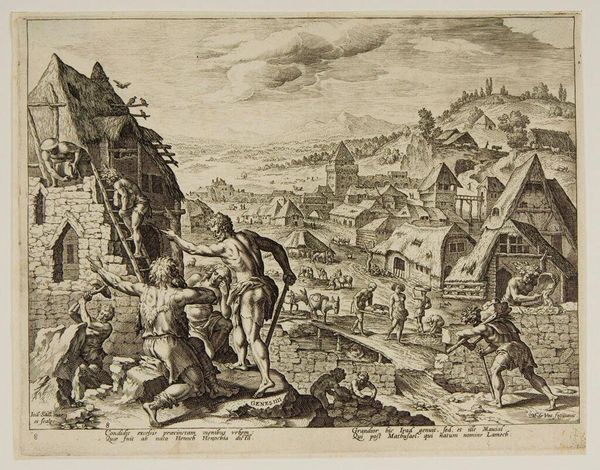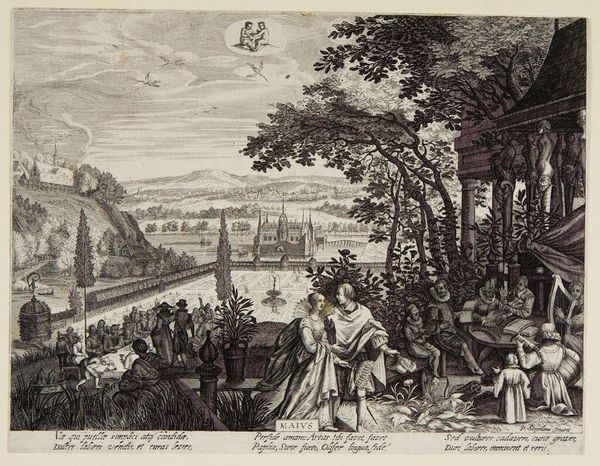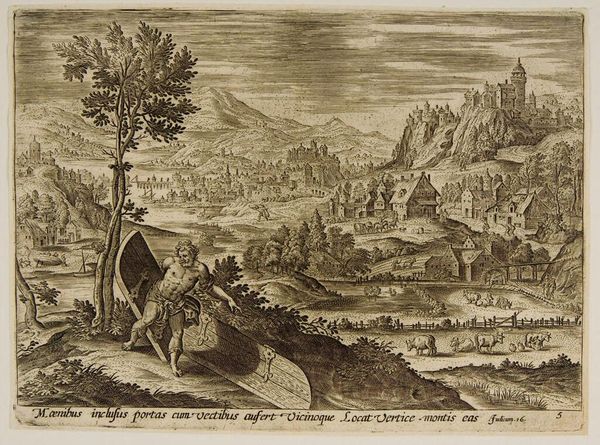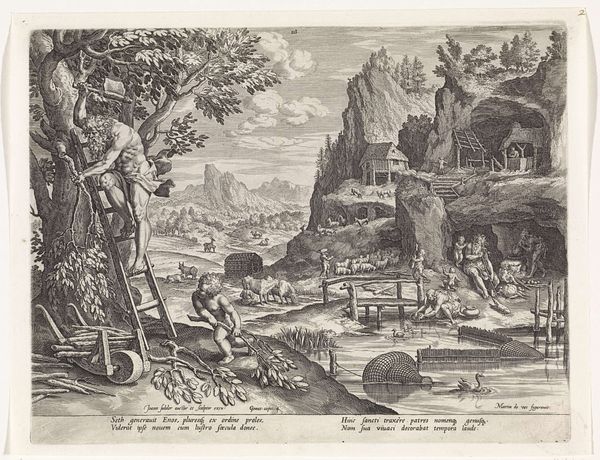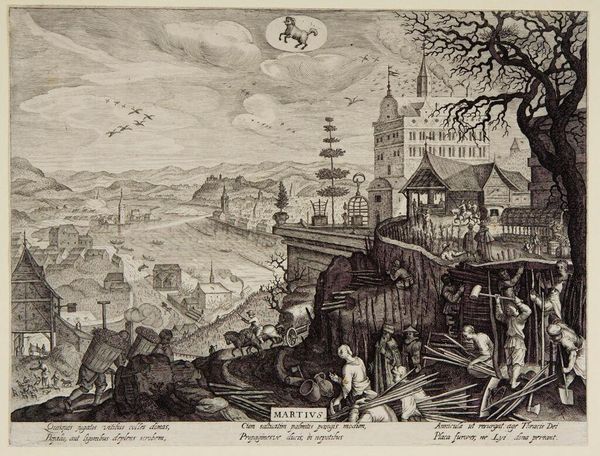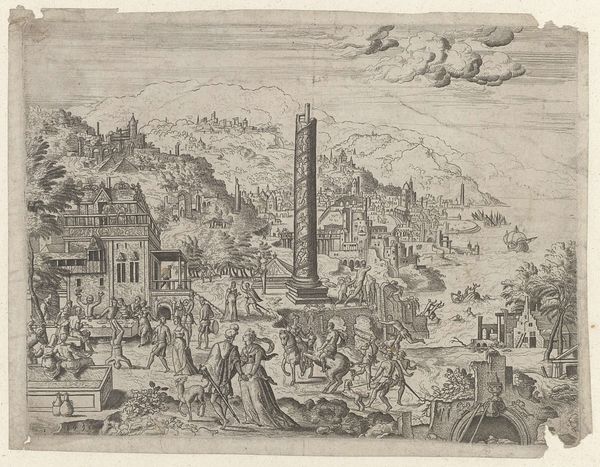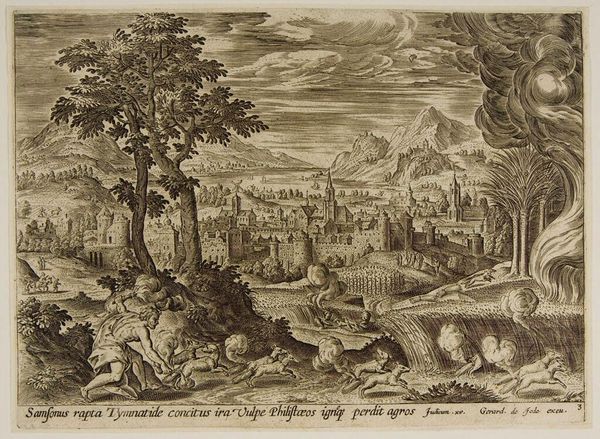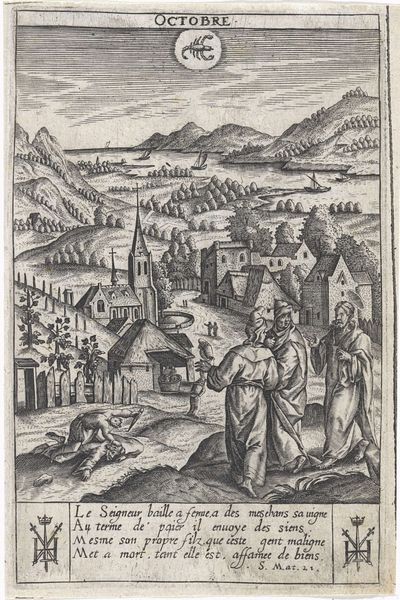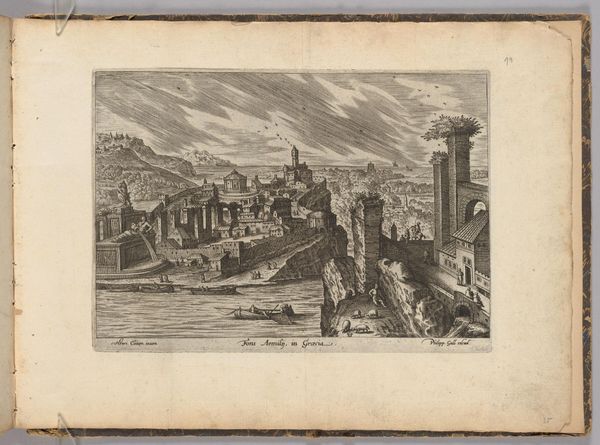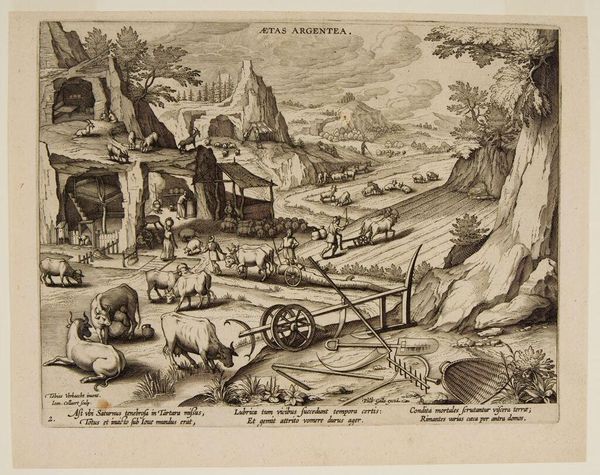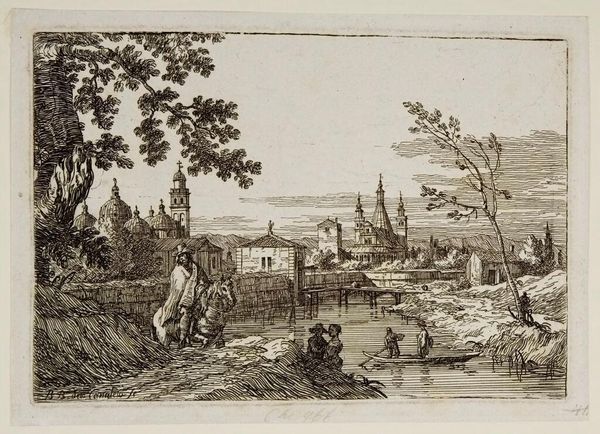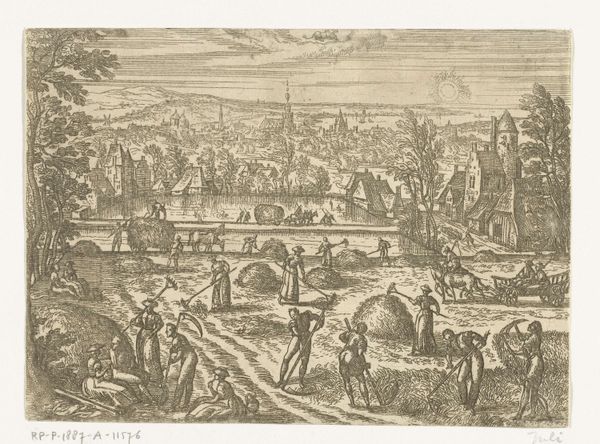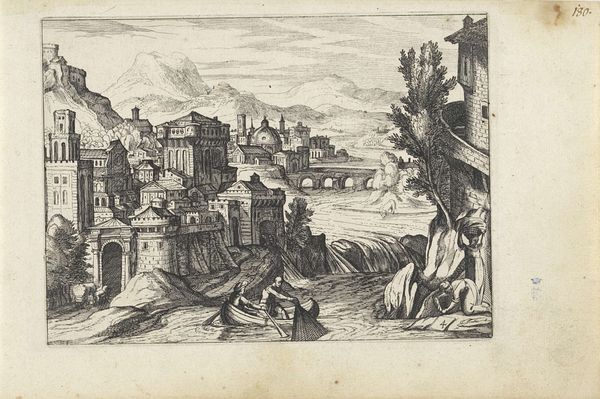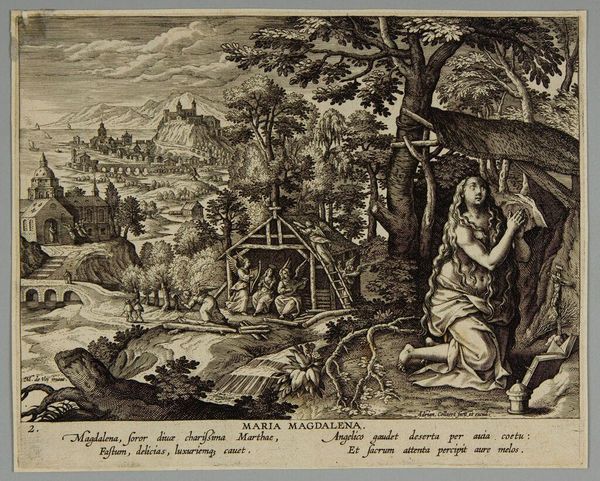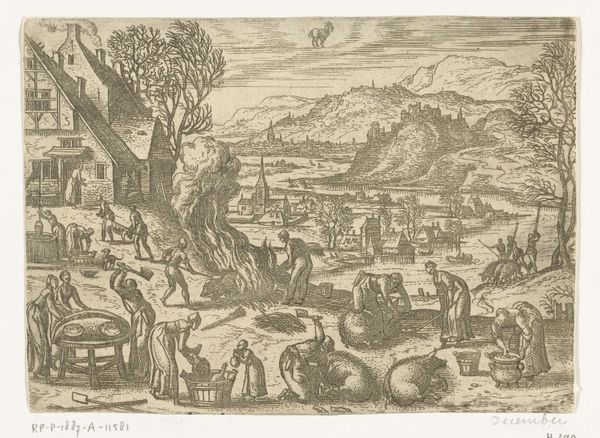
drawing, print, ink, engraving
drawing
allegory
landscape
11_renaissance
ink
cityscape
history-painting
northern-renaissance
engraving
Dimensions: height 165 mm, width 315 mm
Copyright: Rijks Museum: Open Domain
Philips Galle made this print, "Cephalus ontdekt de stervende Procris," sometime before his death in 1612, using an engraving technique. This process, involving carving lines into a metal plate, demands a high degree of skill and exacting labor. The stark contrast between light and shadow is achieved through the precise control of line depth and density. Imagine Galle hunched over the metal plate, pushing the burin through the copper, each stroke contributing to the overall image, from the figures in the foreground to the city in the background. Engraving was a reproductive technology, essential to the spread of knowledge and artistic ideas. It allowed for the mass production of images, making them accessible to a wider audience. So, while Galle's individual labor was intensive, the goal was distribution. By focusing on the material and processes, we recognize the artist's hand and the cultural and economic forces that shaped its creation, blurring the line between craft and fine art.
Comments
No comments
Be the first to comment and join the conversation on the ultimate creative platform.
